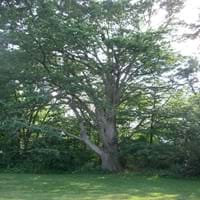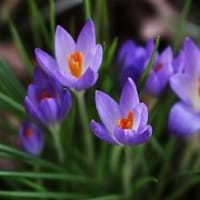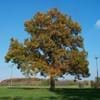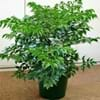Life Span
Perennial
Perennial
Type
Tree
Bulb, Flowering Plants
Origin
North America, United States, Northeastern United States, Mid-Atlantic United States, Central United States, South-Central United States, Texas, Mexico
Aegean Islands, Central Asia, Middle East, North Africa, Southern Europe, Western China
Types
Not Available
Crocus abantensis, Crocus adanensis, Crocus biflorus, Crocus chrysanthus, Crocus korolkowii
Number of Varieties
Not Available
Habitat
Forests, Ridges, Rocky areas
Scrubs, Woods
USDA Hardiness Zone
4-8
3-8
Sunset Zone
2a, 2b, 3a, 3b, 4, 5, 6, 7, 8, 9, 10, 11, 12, 14, 15, 16, 17
1a, 1b, 2a, 2b, 3a, 3b, 4, 5, 6, 7, 8, 9, 10, 11, 12, 13, 14, 15, 16, 17, 18, 19, 20, 21, 22, 23, 24
Habit
Oval or Rounded
Clump-Forming
Minimum Height
Not Available
Flower Color
Red, Light Green, Chartreuse
Blue, Orange, Pink, Purple, White, Yellow
Flower Color Modifier
Bicolor
Not Available
Fruit Color
Brown
Not Available
Leaf Color in Spring
Green, Yellow green
Green
Leaf Color in Summer
Dark Green
Not Available
Leaf Color in Fall
Yellow, Orange
Green
Leaf Color in Winter
Not Available
Green
Leaf Shape
Lobed
Grass like
Plant Season
Spring, Summer, Fall
Spring, Winter
Sunlight
Full Sun
Full Sun, Part sun
Type of Soil
Clay, Loam
Loamy
The pH of Soil
Neutral, Alkaline
Neutral, Slightly Acidic
Soil Drainage
Well drained
Well drained
Bloom Time
Spring, Late Spring
Spring, Winter
Tolerances
Pollution, Salt
Drought
Where to Plant?
Ground
Container, Ground, Pot
How to Plant?
Seedlings, Stem Planting
From bulbs, Grafting, Seedlings
Plant Maintenance
Low
Medium
Watering Requirements
Do Not over Water, Never Over-water, Requires regular watering
Form a Soil ring to water efficiently, Water Deeply, Water twice a day in the initial period, Water when soil is dry
In Summer
Lots of watering
Lots of watering
In Spring
Moderate
Moderate
In Winter
Average Water
Average Water
Soil pH
Neutral, Alkaline
Neutral, Slightly Acidic
Soil Type
Clay, Loam
Loamy
Soil Drainage Capacity
Well drained
Well drained
Sun Exposure
Full Sun
Full Sun, Part sun
Pruning
Remove damaged leaves, Remove dead leaves, Remove dead or diseased plant parts, Remove hanging branches
No pruning needed in the early stages, Prune to stimulate growth, Remove dead or diseased plant parts, Requires little pruning
Fertilizers
Fertilize the first year, No need to fertilize every year
All-Purpose Liquid Fertilizer
Pests and Diseases
Insects, Red blotch
Aphids, Botrytis Blight, Mushroom root rot, Narcissus Basal Rot, Narcissus Bulb Fly, Slugs, Snails, Tulip Fire, Tulip Viruses
Plant Tolerance
Salt
Drought
Flowers
Insignificant
Yes
Flower Petal Number
Not Available
Single
Foliage Texture
Coarse
Fine
Foliage Sheen
Glossy
Glossy
Attracts
Birds
Not Available
Allergy
Asthma
Not Available
Aesthetic Uses
Landscape Designing
Not Used For Aesthetic Purpose
Beauty Benefits
No Beauty Benefits
Not Available
Environmental Uses
Air purification, Amazing growth rate, Food for insects, Nesting sites for birds, No fertilizer, pesticides, or herbicides needed, Prevent Soil Erosion
Air purification
Medicinal Uses
No Medicinal Use
Arthritis, Gout
Part of Plant Used
Tree trunks
Whole plant
Other Uses
Air freshner, Application in Furniture, Economic Purpose, Used as firewood, Used in construction, Used in pulpwood and lumber production, Wood is used for making furniture, Wood is used fore making tools, Wood is used in construction
Not Available
Used As Indoor Plant
No
No
Used As Outdoor Plant
Yes
Yes
Garden Design
Feature Plant, Shade Trees
Not Available
Botanical Name
QUERCUS muehlenbergii
Crocus Longiflorus
Common Name
Chinkapin Oak, Yellow Chestnut Oak
Crocus
In Hindi
Chinkapin ओक
Crocus
In German
chinkapin Oak
Krokus
In French
chinkapin Oak
Crocus
In Spanish
chinkapin Roble
Azafrán
In Greek
Chinkapin Oak
κρόκος
In Portuguese
carv Oak
Açafrão
In Polish
Chinkapin Oak
Krokus
In Latin
Oak Chinkapin
Erocum
Phylum
Tracheophyta
Magnoliophyta
Class
Magnoliopsida
Liliopsida
Order
Fagales
Asparagales
Family
Fagaceae
Iridaceae
Clade
Angiosperms, Eudicots, Rosids
Angiosperms, Monocots
Tribe
Not Available
Not Available
Subfamily
Quercoideae
Crocoideae
Number of Species
Not Available
Importance of Chinkapin Oak and Crocus
Want to have the most appropriate plant for your garden? You might want to know the importance of Chinkapin Oak and Crocus. Basically, these two plants vary in many aspects. Compare Chinkapin Oak and Crocus as they differ in many characteristics such as their life, care, benefits, facts, etc. Every gardener must at least have the slightest clue about the plants he wants to plant in his garden. Compare their benefits, which differ in many ways like facts and uses. The medicinal use of Chinkapin Oak is No Medicinal Use whereas of Crocus is Arthritis and Gout. Chinkapin Oak has beauty benefits as follows: No Beauty Benefits while Crocus has beauty benefits as follows: No Beauty Benefits.
Compare Facts of Chinkapin Oak vs Crocus
How to choose the best garden plant for your garden depending upon its facts? Here garden plant comparison will help you to solve this query. Compare the facts of Chinkapin Oak vs Crocus and know which one to choose. As garden plants have benefits and other uses, allergy is also a major drawback of plants for some people. Allergic reactions of Chinkapin Oak are Asthma whereas of Crocus have Not Available respectively. Having a fruit bearing plant in your garden can be a plus point of your garden. Chinkapin Oak has showy fruits and Crocus has no showy fruits. Also Chinkapin Oak is not flowering and Crocus is flowering. You can compare Chinkapin Oak and Crocus facts and facts of other plants too.





